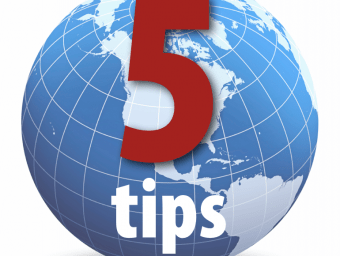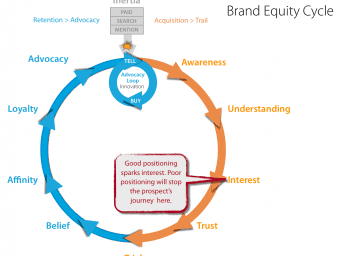Zombie Marketing: Why dead brands are being brought back from the grave
Today I received a package from my sister who lives in Boston. Inside was something I haven’t seen since I was twelve:...
9 Jun 2009 6290 ViewsToday I received a package from my sister who lives in Boston. Inside was something I haven’t seen since I was twelve: a box of Quisp breakfast cereal. That’s because its producer, Quaker Oats, stopped selling the brand in the mid 1970’s. Thirty years later it seems Quaker Oats have had a change of heart (assuming that my box of Quisp is new and not some relic my sister found on E-Bay).
A company returning one of its retired brands to the market can be effective at promoting a sense of nostalgia. But I suspect the reasons for reviving lost brands today is less about sentiment and more about dollars and cents. All this makes the practice more relevant today than ever. The implications of Quisp’s return provide a lesson in brand equity management that could yield a nice windfall for companies who have a backlog of retired brands.
Brim and Quisp – examples of brands that came back from the dead
Brim is another case in point. Brim Coffee from General Foods was once a household name in America. That was until General Foods was merged into the same conglomerate as Kraft Foods who owned the Maxwell House brand. Brim was made redundant and quietly sidelined in the 90’s. In 2007 a company called River West Brands in Chicago did some research and discovered that among people over the age of 25, Brim had 92 percent aided awareness. With that awareness come perceptions, mostly positive and grown somewhat sweeter, I’d imagine, in the sepia-glow of nostalgia.
Quisp and Brim are just the beginning. There are hundreds of has-been brands around the world that have been removed from the market often for no fault of their own. Each of these brands houses latent awareness and perception, not to mention a warm and fuzzy sense of nostalgia.
Think of it: A company like General Foods or Quaker Oats invest hundreds of millions burning a brand name in the the minds of every man, woman and child in America. Later, due to mergers or mismanagement, the brand fall out of favor and disappears. Where does the brand equity go? Nowhere, it stays where it has always been – with consumers.
Nostalgia as a strong factor in relaunching a dead brand
Dead since 1991 this iconic brand met the sad fate of being
purchased by a tiny railroad in New England.
Even though the product has disappeared from the shelves, the brand awareness and brand perceptions will live on for a generation. That’s because the real equity was built up and accumulated in the brains of all the people who knew the brand. And it remains there ready to be tapped as long as those people are alive.
Why were so many companies so willing to ditch these brands are why is repurposing brands becoming more relevant today? Because these brands were built before the long tail, before TiVo and before the media market was shattered into thousands of tiny specialized shards. A slide shown at last years CGAM conference in Los Angeles summed it up best “In the 1960’s an advertiser could reach 80% of U.S. women with a spot aired simultaneously on CBS, NBC and ABC. Today an ad would have to run on 100 TV channels to have a prayer at duplicating that feat. … Monolithic blocks of eyeballs are gone.” (Forrester Research)
An article in the New York Times tells the story of how P&G, owner of the Charmin toilet paper brand, abandoned the somewhat less popular White Cloud toilet paper brand. An entrepreneur snatched up the brand and resumed production selling exclusively to WallMart. WallMart’s customers probably have no clue the brand ever traded hands. As a result P&G finds itself competing against a brand P&G created. The article relates a similar story of how the defunct ibuprofen brand Nuprin was revived and sold to US drugstore giant CVS to serve as a premium-priced house brand (it has since been discontinued by CVS).
Brand awareness before and now
Brands from the 20th century were built when awareness was relatively cheap. Today the cost of building brand awareness has risen more sharply than sweet crude. So its only natural that the idea of extracting the awareness from retired brands would be a viable option. In fact retired brands have emerged on financial radar screens as a new asset category. A pioneer in bringing these assets to light has been River West Brands. In fact they have build their entire business around the idea. Its an ingenious business model.
“We recognized the opportunity presented by dormant brands in
2001, and have been working to systematically transform these brands
from orphans into valuable assets ever since. We are the first company
ever to successfully acquire and exploit brands in this new emerging
asset class.” – River West Brands
They are working on resuscitating a number of brands that you may recognize, but probably haven’t thought about in years.
Its not as if these brands are carrying a lot of baggage. These brands did not fail catastrophically. In most cases they just failed to hold our interest and faded away. The first time we notice they are gone is when we hear they are returning.
On the other hand, not all brands are fit for revival. Had these brands failed catastrophically, they would probably not be worth reviving no matter how much awareness they have. I don’t think Enron, Arthur Andersen, or Lehman Brothers will be making a comeback anytime soon. That is unless they were to reinvent themselves in a completely different category like the line of chic watches that revived the Nixon brand from the category of failed presidencies to that of hip fashion accessory.
Of course, healthy brand awareness and fond memories alone will not guarantee success in a competitive market. But it can go a long way towards mitigating the risk of launch and speeding uptake. So if you have any old brands kicking around in your corporate closet, now might be a good time to dust them off and see what they’re worth. If you need inspiration, consider that the Volkswagen Beetle was once a dead
brand too.
See Also:
For all your dead brand needs and a great list of 101 dead brands check out J. Garland Pollard IV’s Brand Land USA Blog.
Like this post? You'll find more marketing insights in my new book: International Brand Strategy: A guide to achieving global brand growth, now available from booksellers globally. Order your copy here.







2 replies
Last night, I went to my closest pharmacy, a CVS, to buy a bottle of Nuprin, which I purchased there about 2005. Haven’t had a headache since 2005. When I couldn’t find any on the shelves, I asked the pharmacist, who simply said it didn’t appear on the list of available products anymore. One thing I noticed about the pills in 2005 is that they were white, instead of yellow like in the old days. Now I find out from your blog it was a zombie revival. Perhaps you might find it interesting to do a blog post on why CVS dropped the product line again.
Good post. I loved Quisp as a kid and remember being disappointed when it was pulled in the early 80s. However, I can’t see that many people buying it due to feelings of nostalgia. Maybe they’ve just run out of ideas? “Fill it to the rim with brim”, on the other hand, is a great slogan that still pops into my head from time to time.